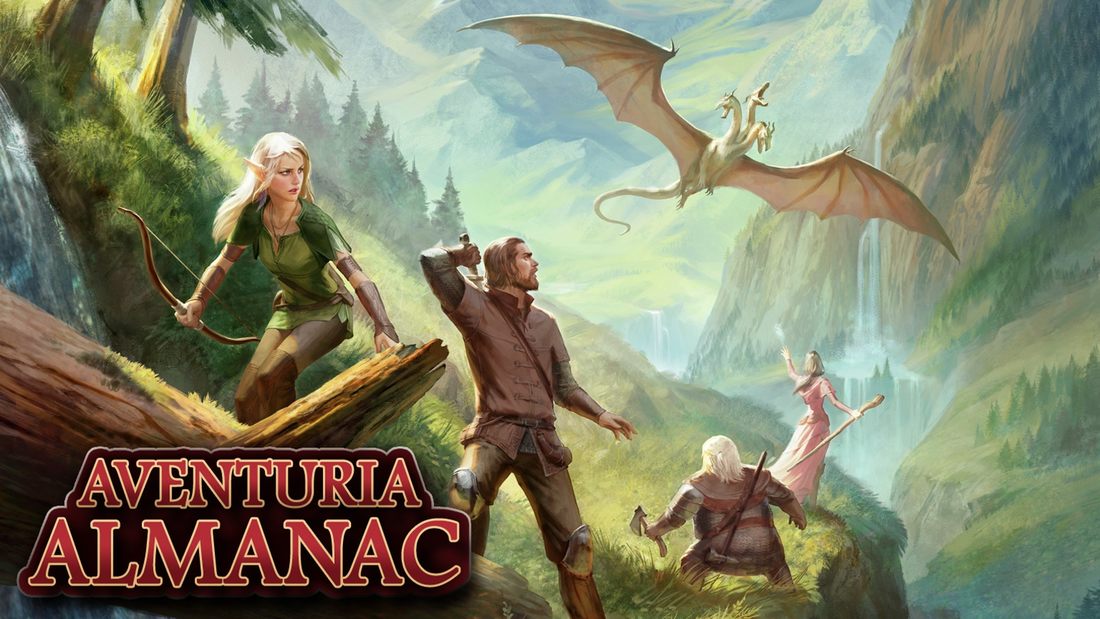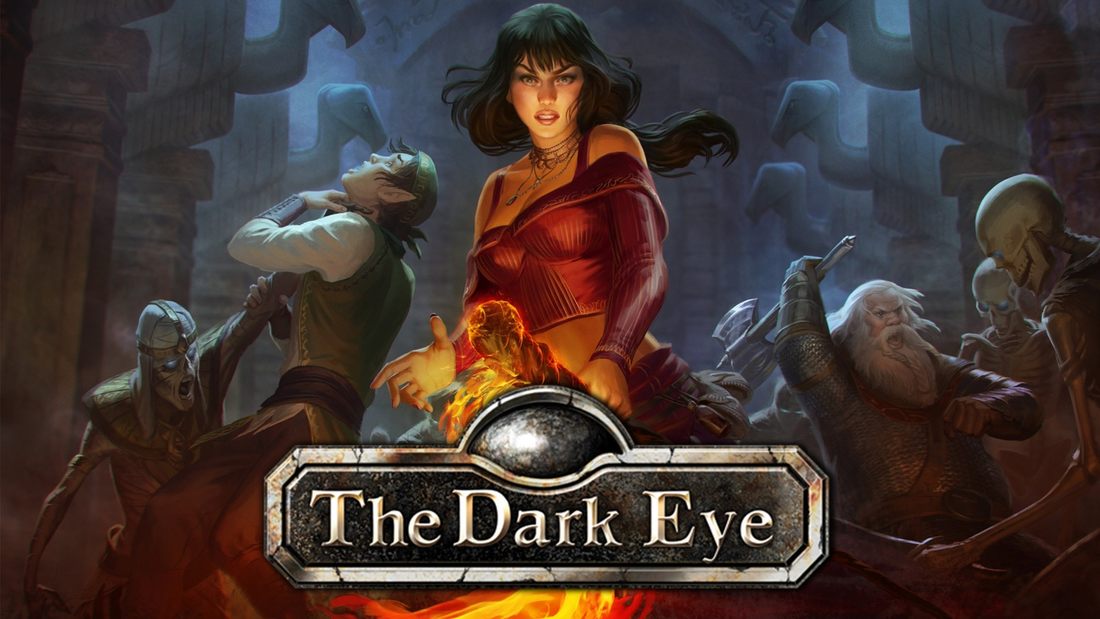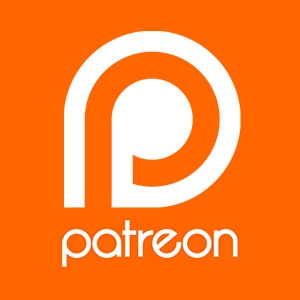 Editor’s note: Enjoy reading articles about your favorite hobby and engaging with fellow gamers? We do too, but hosting and producing our site isn’t free. Please consider visiting our Patreon page and supporting us at any amount. We put every dollar back into the site and its production, and your help has allowed us to have certain paid article months for our contributors (such as this month). Thank you for your continued readership and your support! -David, Blog Manager If my defense of rules lawyers should imply anything, it's that I approach TRPGs as games. Roleplaying is certainly a part of them, but they’re still games, and there are still rules that should be followed by all parties, at least to some degree. I don't like to think of them as dichotomous, though. In fact, without the fluffy parts like setting and character motivation and development, the rules can sometimes seem like little more than just mathematical problems and rolling dice to get excited over how high the numbers go. With all that said, since I've already discussed some interesting mechanics of The Dark Eye, let's take a look at some of these fluffier parts, shall we? 1) Once Upon A Time, In A Land Much Like Our Own The description of Aventuria, the continent upon which The Dark Eye takes place, is described only in passing in the Core Rulebook. They dedicate only a few pages to naming the various regions, and from then on only allude to them as needed (such as in the cultures section). Enter the Aventurian Almanac: a book dedicated to detailing the specifics of the continent. Every region is expounded upon in brief and in detail, usually including some real world or fictional equivalent. As an example, The City States of Thulamydes was inspired by The Thousand and One Nights, while the Southern Sea is meant to be reminiscent of the 1700’s Caribbean. (The heart of what is known as “The Golden Age of Piracy!”) This is a very helpful inclusion that serves many purposes. It quickly establishes the intended theme and mood a given area is meant to evoke, in addition to giving a resource for further reading and possible inspiration. 2) It's Magic, Like I Never Got Hit! A very common debate amongst fans of D&D and other games is the nature of hit points. Are they a numerical representation of plot armor or how much meat and blood you can safely lose before dying? Games that follow this second school of thought in the name of realism, such as World of Darkness, usually wind up with some wonky end results: an ordinary mortal can feasibly be healed from being shot several times in a matter of days. In the real world (that this game is based on) this feat would take weeks, if one could even recover from such a traumatic event. The Dark Eye acknowledges this possibility of these unrealistic traumas and recoveries, such as being able to heal broken bones in a matter of weeks or even days. As it turns out, their retort is that magic saturates the world, and thus wounds heal much faster and with less scarring. It’s as campy as it is cliche, but it doubles as a justification for a GM altering the healing rates if they feel so inclined. If ambient magic can improve a person’s natural healing, it can just as easily obstruct it. Magic could instead begin to dissipate from the world, causing other problems in addition to wounds healing slower. 3) Different Cultures Use Different Weapons The Dark Eye has all your standard fantasy weapons: swords, shields and spears of varying size, and daggers and axes with various uses; weapons that are all generic enough that you could reasonably see them everywhere. It also has some more unusual weapons; exotic weapons, if you will. Weapons of almost every type that are distinctly better in some way. There’s an important caveat, however. Most of these superior weapons are only available to members of the culture that produce such weapons. For example, there are many special weapons made by dwarves, such as the Dragon Tooth, Wyvern Beater, and Iron Forest Crossbow. These are better than daggers, hand axes, and heavy crossbows, respectively, but can only be acquired by Dwarves. Accepting this kind of limitation can lead to some interesting world building. Is it a protected secret of the people, simply not able to be mass produced? Or did nobody think to trade these items with outside cultures yet? Intriguing questions for a GM (assuming these questions aren’t already answered in a splatbook or excerpt I haven’t read yet). This list of exotic and exclusive weaponry also includes implements used by the various churches of Aventuria; holy weapons and blessed weapons entrusted to their priests. Weapons such as the Sun Scepter used by Blessed Ones of Praios, Rhondra’s Crest by none other than the Blessed One’s of Rhondra, and my personal favorite: The Raven’s Beak. The Raven’s Beak is a weapon used by the priests of the Boron, the God of Rest, Dreams, and Death. Among the duties of these priests is to ensure that the dead are properly interred. Should the dead rise, the priests must return them to rest, forcefully if need be, and possibly with the aid of their Raven’s Beak. ...which looks like a decorative claw hammer. Real world inspiration, justification for a lack of realism, and a variety of weapons are just the beginning of what The Dark Eye has to offer/ After all, Aventuria includes analogs of most, if not all, of the known world, and even places where hell literally came to earth. There’s no way a thousand word long article can explain thousands of pages of setting, though, so think of this as a “Your mileage may vary” opinion piece. Aaron der Schaedel is a GM of many different games, but because of the wide variety of games he can run, he’s not used to diving deep into the lore of games. If you find him on YouTube, he’ll probably have some videos up about The Dark Eye by now. Picture Reference: https://www.kickstarter.com/projects/1216685848/aventuria-almanac-the-dark-eye-rpg  The Dark Eye, also known as Das Schwarze Auge, is a fantasy TRPG from Germany. It’s game that’s been around for quite some time, to the effect of 30 years. As a result, The Dark Eye is as much a phenomenon as Dungeons and Dragons or Shadowrun: there are various novels set in the universe of The Dark Eye, as well as numerous video game adaptations. In recent years, the 5th Edition of The Dark Eye has been published in English. As one might expect out of a game from Germany, it possesses an extraordinary level of detail that would make even the most hardcore Shadowrun players say “Don’t you think that’s a bit excessive, chummer?” There’s pros and cons to everything, though, so let’s take a brief look at what a game of this level of complexity does well! 1) Character Creation Is Open-Ended One of the praises I’ve often heard from fans of Pathfinder and D&D 3.5 is that there’s a lot of options for creating characters. Meanwhile, a related criticism of D&D 5th edition is that there aren’t as many options or as much freedom in that regard. If it’s freedom you’re craving during character creation, The Dark Eye grants it in spades by being a point-buy system. You’re given a certain amount of “Adventure Points” to make your character, with everything about your character costing so many. Though if you’re new to the game or otherwise want the framework of having things like races and classes to pick from during character creation, The Dark Eye provides that as well. To illustrate, every Profession (Class) has a list of different skills it provides, as well as variations that might offer different skills. These Professions (and variations) also have a listed amount of AP associated with it. Thus, a player or GM knowledgeable about how much different skills or abilities cost could make changes to a Profession’s skill list to fine tune it to what they desire! 2) Dice Mechanics Build Off Each Other The Dark Eye has some very robust and detailed sub-systems. This aspect can be daunting at first blush, since it does mean there's a great deal of minutiae that needs to be understood. On the bright side, though, it all builds off of a few recurring rules. At the most basic, you have your attribute roles, which are a simple Roll d20 and see if it’s at or below the attribute in question. Attack and defence rolls in combat follow the same kind of logic, except you’re instead rolling beneath a Combat Ability. Skill rolls are a small step up from that, where each skill has three associated attributes, and you roll a die for each attribute, seeking to meet or go below the attribute in question. Your skill rating comes in by granting you a few points to “nudge” a die in the direction you need, with the more points you have left over at the end granting a better margin of success. As far as spellcasting goes, each spell is treated as an individual skill that requires Arcane Energy every time it’s used, with the amount of skill points left over after rolling for it having a much more significant impact on the end result. All of The Dark Eye’s sub-systems work this way: they build off of something that was previously established. 3) Many Abilities Take Time And Planning The general scale of time in The Dark Eye is much slower; what this means is that there’s a long list of different skills, and many of them are skills that require a great amount of time or some other cost. The core rules include many different sub-systems for creating magic items. All of these can be readily available to starting characters, but also require time and other precious resources such as permanently lowering one’s arcane energy, or finding rare or expensive materials. Mages aren’t alone in this conundrum, however. The heaviest of armors are readily available to new characters as well, but require not only time to put on, in addition to granting three levels of the status “Encumbered,” imposing numerous penalties that would make traveling long distances challenging. 4) Combat REALLY Isn’t Everything (Or Is It?) The Dark Eye does have a fairly robust combat system, complete with all manner of special abilities and other factors that can go into a combat scene. The aspect I believe is most important is this, though: healing doesn’t happen very quickly, to the point where it’s impractical to do so in combat. This makes the stakes of combat much higher, since it’s no longer easy to reverse the effects of being ravaged by cold steel. One could wear heavy armor to make battles safer, but then journeying becomes more perilous. Heavy armor is cumbersome, and makes you more prone to exhaustion! (Both of which cause penalties to all actions that add up.) The end result of these higher stakes is that an adventurer that wants to live will have to be willing to either plan extensively for battle, or seek ways to avoid it. When you consider that player characters don’t necessarily gain experience for every antagonist they slay, fighting to the death stops seeming so alluring. (NPCs share this sentiment as well, since many statblocks in the bestiary indicate that the creature in question would flee if their Life Points fall below fifty percent!) If I were to sum up what the major difference between Dungeons & Dragons and The Dark Eye is, I believe it’d be most meaningful to say that mundane choices and long tasks are given more support in The Dark Eye. Professions in The Dark Eye are more than just how well your character can slay monsters, and most magical spells deal with more mundane tasks than making combat end faster. That isn’t to say you can’t have your monster slaying fun in The Dark Eye. After all, the continent of Aventuria does have a region where the netherworld has begun to bleed through into the world of ordinary people... Aaron der Schaedel has a penchant for games with dense rulebooks. If you looked up Shadowrun on Youtube, you probably found one of his videos on the subject. He’s also hoping you didn’t notice that he forgot to write an end blurb in his last article he wrote for High Level Games. Picture Reference: https://www.kickstarter.com/projects/1216685848/the-dark-eye-rpgenglish-edition |
All blog materials created and developed by the staff here at High Level Games Archives
April 2023
Categories
All
|
Proudly powered by Weebly

 RSS Feed
RSS Feed